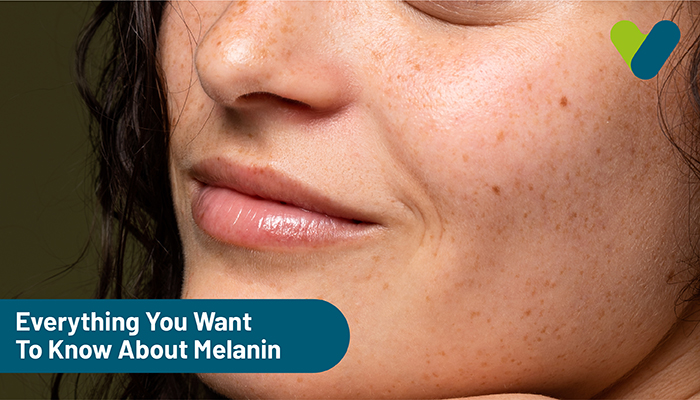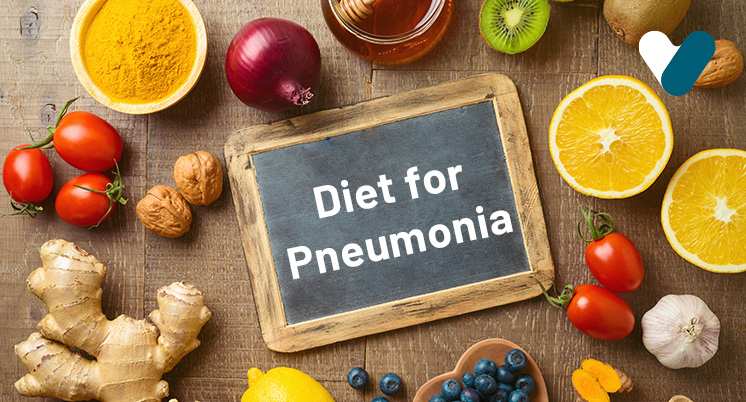Specialised cells known as melanocytes are responsible for producing melanin. The melanocytes contain an enzyme called Tyrosinase, which is made according to instructions of the TYR gene. The first stage of the formation of melanin is carried out by tyrosinase. It turns the amino acid tyrosine, which is a component of proteins, into a substance called dopaquinone. Dopaquinone is converted to melanin in the skin, hair follicles, iris of the eye, and retina by a sequence of further chemical processes.
Melanin is a complex polymer and a natural pigment in the skin that gives hair, eyes, and skin their colour. The term "melanin" refers to a large group of interconnected molecules involved in many biological processes, including the pigmentation of skin and hair and photoprotection of the skin and eyes. Photoprotection means the prevention of UV radiation-induced skin damage. The production of melanin affects how dark the eyes, skin, and hair are. Numerous factors, such as genes affect the melanin levels in your body.
Role of melanin
Your individual eye, hair, and skin colours are a result of melanin, which is found in varying concentrations in both human and animal skin. Melanin serves several biological purposes, including skin pigmentation, UV protection for the eyes and skin, and hair colouring. Melanocytes create melanin in the basal layer, which is the innermost layer of the epidermis. Melanin is then transported to the skin surface by keratinocytes.Melanin Advantages
Important advantages of melanin include:
- Protection against UV radiation: Your body creates more melanin when you are in the open sunlight. Melanin absorbs UV light and redistributes it to the skin's higher layers. It also safeguards the genetic material housed within your cells by blocking UV radiation. However, melanin alone is insufficient to prevent UV damage to the skin. Therefore, it is essential to use sunscreen and appropriate attire whenever outdoors.
- Shield against reactive oxygen species: Reactive oxygen species are by-products of cellular activity in the body. When reactive oxygen species (ROS) accumulate in your cells, they can cause stress, premature ageing, diabetes, and cancer. Melanin absorbs ROS, hence enhancing antioxidants and removing free radicals.
Melanin types
The most common forms of melanin are the following:- Eumelanin: Eumelanin is principally responsible for producing dark hues in skin, eyes, and hair. Individuals with brown and black hair have degrees of eumelanin. When there is no black eumelanin and a negligible quantity of brown eumelanin, it results in blonde hair.
- Pheomelanin: Pheomelanin colours specific regions of your body like your lips and genitalia. Red hair contains the same amount of pheomelanin and eumelanin. An equal combination of brown eumelanin and pheomelanin leads to strawberry blonde hair. Pheomelanin and eumelanin is present in microscopic organisms like bacteria, fungi, feathers of birds, fur of animals, scales of fish, and primarily in vertebrates.
- Neuromelanin: Neuromelanin controls the pigmentation of neurons. It has nothing to do with the apparent colour of objects. Melanocytes produce the pigments eumelanin and pheomelanin. Neuromelanin is present in the brain only.
- Other melanin types: Allomelanin is a type of nitrogen-free melanin that is found in fungi. Some plants, such as black oat, contain an oxidised version of the pigment melanin.
Melanin insights
The name is derived from the ancient Greek for dark, 'Melanos'. The colour range of melanin is always dark brown to pitch black. Gene variants or alleles give the deeper melanin skin color due to increased melanin pigments in South Indians. On the other hand, gene variants that make the skin lighter are found in north Indians. Since the population is living closer to the equator, the darker complexion of south Indians protects them from the sun's powerful UV radiation. People in south India have more melanin than people in north India.- Relation between melanin and UV light: Studies have established that melanin production in melanocytes surged approximately one million years ago as an evolutionary adaptation to the widespread loss of human body hair. Communities near the equator tend to produce a higher proportion of the UV–absorbent, antioxidant, and free radical eumelanin. In contrast, communities living farther away from the equator are richer in pheomelanin. The pigment generates free radicals and accelerates carcinogenesis when overexposed to UV light.
- Melanin absorbs the sun: Sunlight helps the skin produce vitamin D, an essential component for healthy bone growth. The disadvantage is that the ultraviolet rays from the sun can harm the epidermal layer of skin that contains melanin. Melanin shields the skin from the sun's UV radiation, which can cause sunburn and a loss of skin suppleness, resulting in premature ageing. The sunlight stimulates the skin that leads to a deeper melanin skin or tanning. When new cells migrate to the surface, the browned cells are pushed away or sloughed off, and the tan fades. Morning sunlight can be beneficial but over exposure to ultraviolet can cause sunburn. UV rays penetrate the outer layers of skin and reach the deeper levels and damage or kill skin cells.


